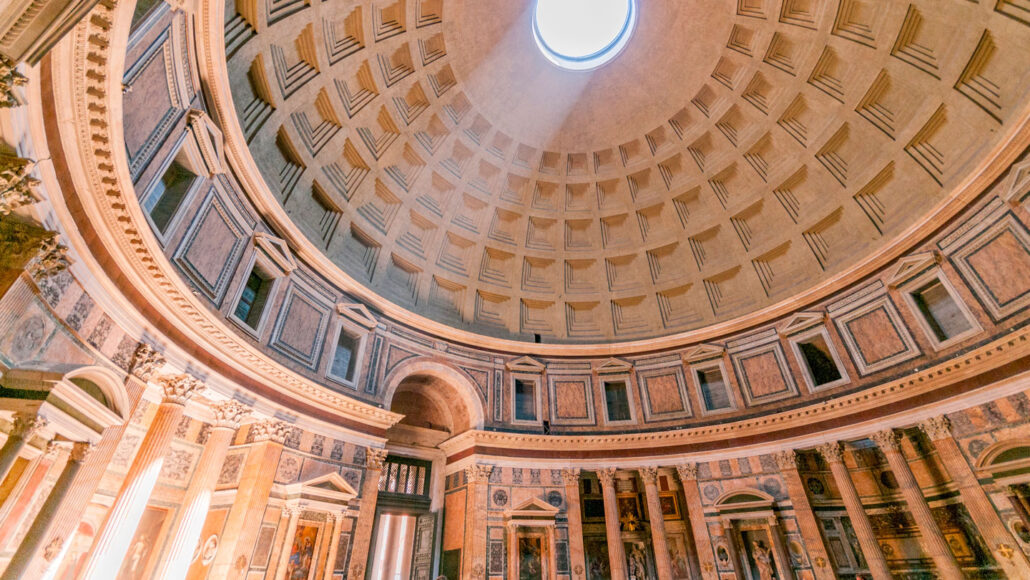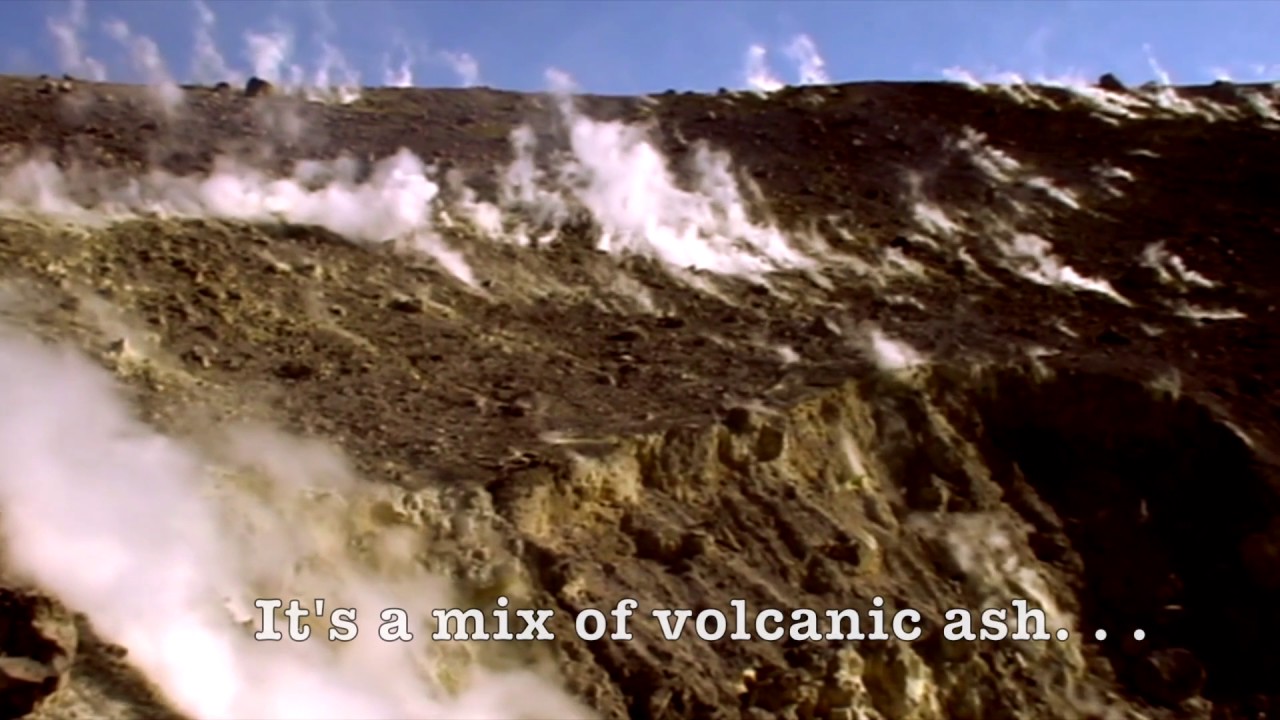Scientists Crack The Code To Long Lasting Ancient Roman Concrete
Scientists crack the code to roman concrete, which has withstood the elements for millennia. Using a combination of cement, gravel, sand, and water, Masic and his coworkers were attempting to recreate a method used by the ancient Romans to build concrete.
Author:Camilo WoodReviewer:Dexter CookeJan 18, 2023297 Shares296.6K Views

Scientists crack the code to roman concrete, which has withstood the elements for millennia. Using a combination of cement, gravel, sand, and water, Masic and his coworkers were attempting to recreate a method used by the ancient Romans to build concrete.
Scientists theorized that the "hot mixing" of calcium oxide granules (commonly known as "quicklime") and volcanic ash would do the trick. To it, water is added.
They reasoned that if the cement was heated too much during the mixing process, it would not become totally homogenous, but would instead contain tiny, calcium-rich pebbles. The secret to the Romans' concrete buildings' resilience may lie in the tiny pebbles that decorate their walls.
Reaction Of Volcanic Material With Sea Water
The volcanic material's components interacted with the seawater to fortify the structure, as revealed by experts. The researchers think their finding might pave the way for greener construction practices.
The Roman compound has long perplexed scientists since it seemed to resist erosion over time, unlike current concrete mixes. This substance appears to become stronger the more it is exposed to the elements, including sea water.
Scientists found traces of a rare mineral called aluminum tobermorite in concrete samples taken from ancient Roman sea walls and harbors. They hypothesize that the heat created by the Roman combination when exposed to sea water caused the strengthening ingredient to crystallize in the lime.
Now that scientists have mapped the distribution of elements using an electron microscope, they can examine the harbor samples in more detail. They used X-ray micro-diffraction and Raman spectroscopy to learn more about the chemistry at play.
According to the findings of this new research, scientists have discovered tobermorite and phillipsite, two related porous minerals, developing through the concrete's cellular structure.
According to the study's authors, these crystals were able to grow and expand in the presence of sea water over time, making the concrete stronger and less prone to cracking.
“„Contrary to the principles of modern cement-based concrete, the Romans created a rock-like concrete that thrives in open chemical exchange with seawater.- Marie Jackson, University of Utah, USA
Roman Recipe For Concrete Longevity
For decades, scientists have been attempting, without much success, to recreate the Roman formula for concrete longevity. Hot mixing being the key was assumed to be the best method.
Masic and his team had looked through works by the Roman architect Vitruvius and historian Pliny for guidance. These sources noted, for instance, that the limestone used to make quicklime must be very pure, and that combining quicklime with hot ash and then water might generate a great deal of heat. The crew had a hunch the rocks were significant even if they weren't specifically addressed.
These white inclusions—bits of rock lodged in the walls—are found in all ancient Roman concrete samples. Masic says experts thought insufficient cement mixing caused the impurities for years. These are the well-organized Romans.
The researchers wondered whether these cement inclusions were features rather than bugs. Chemical examinations of rocks buried in walls at the Italian archaeological site of Privernum showed that they were calcium-rich.
That raised the intriguing notion that these rocks were helping structures repair fractures from weathering or earthquakes. Calcium was available to dissolve, seep into fissures, and re-crystallize.
Could the team see this? First, heat mix the rocks and pray nothing detonated. Step two: Test Roman-inspired cement. The team compared hot-mixed and non-hot-mixed concrete. Broken concrete blocks were spaced apart. To test how long the seepage halted, water was trickled into the fissure.
Masic calls the findings remarkable. Hot-mixed cement blocks cured in two to three weeks. Science Advancesreported January 6 that concrete without hot mixed cement never cured.
Cracking the formula might help the earth. The Pantheon and its elaborate concrete dome have stood for over 2,000 years, but contemporary concrete constructions may last 150 years at best. The Romans had no steel reinforcing bars.
Concrete replacements increase greenhouse gas emissions. Longer-lasting concrete might minimize carbon emissions. Masic estimates they produce 4 gigatons of this material annually. Each metric ton of concrete produced emits 1 metric ton of CO2, accounting for 8% of worldwide CO2 emissions.
Masic argues the concrete sector resists reform. New chemistry in a combination with established mechanical characteristics raises issues. He claims cost is the industry's biggest issue. Companies don't want to overprice concrete.

How seawater strengthens Roman concrete
Final Words
The researchers believe that reinstating this technology, which has survived the test of time and could be manufactured with little additional expense, might address both of these issues. Indeed, they are betting on it: Masic and some of his coworkers have founded a company called DMAT, which is presently seeking seed funding to commence commercial production of the Roman-inspired hot-mixed concrete. It is particularly enticing due to the fact that the material is thousands of years old.

Camilo Wood
Author
Camilo Wood has over two decades of experience as a writer and journalist, specializing in finance and economics. With a degree in Economics and a background in financial research and analysis, Camilo brings a wealth of knowledge and expertise to his writing.
Throughout his career, Camilo has contributed to numerous publications, covering a wide range of topics such as global economic trends, investment strategies, and market analysis. His articles are recognized for their insightful analysis and clear explanations, making complex financial concepts accessible to readers.
Camilo's experience includes working in roles related to financial reporting, analysis, and commentary, allowing him to provide readers with accurate and trustworthy information. His dedication to journalistic integrity and commitment to delivering high-quality content make him a trusted voice in the fields of finance and journalism.

Dexter Cooke
Reviewer
Dexter Cooke is an economist, marketing strategist, and orthopedic surgeon with over 20 years of experience crafting compelling narratives that resonate worldwide.
He holds a Journalism degree from Columbia University, an Economics background from Yale University, and a medical degree with a postdoctoral fellowship in orthopedic medicine from the Medical University of South Carolina.
Dexter’s insights into media, economics, and marketing shine through his prolific contributions to respected publications and advisory roles for influential organizations.
As an orthopedic surgeon specializing in minimally invasive knee replacement surgery and laparoscopic procedures, Dexter prioritizes patient care above all.
Outside his professional pursuits, Dexter enjoys collecting vintage watches, studying ancient civilizations, learning about astronomy, and participating in charity runs.
Latest Articles
Popular Articles